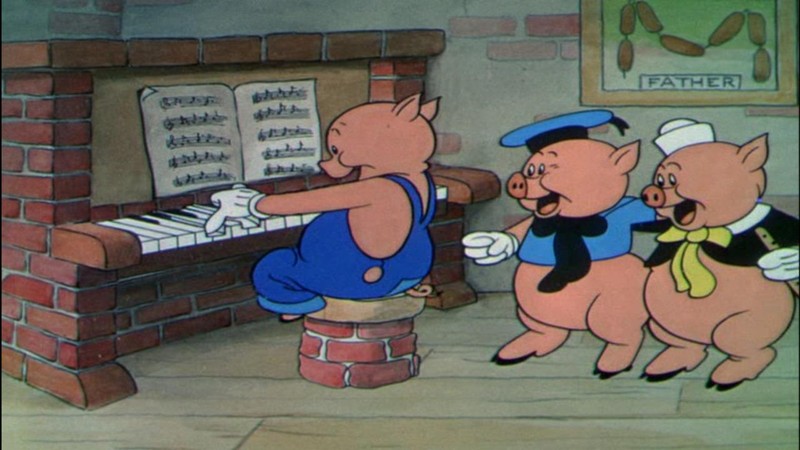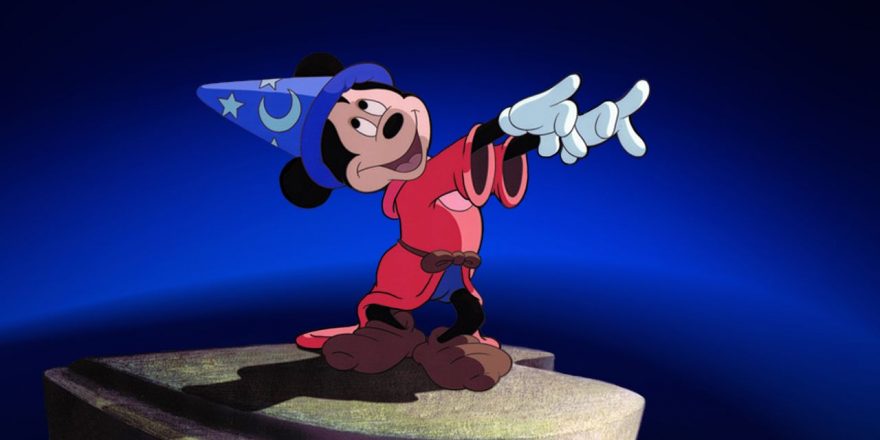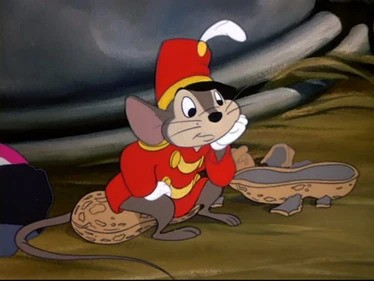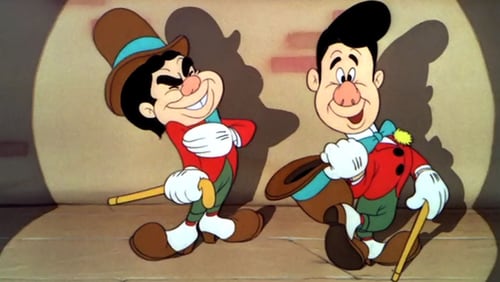(A version of this article was published for Laughing Place on May 25, 2022.)
For a few very rare folks, the ability to add life, character, and charm to an animated figure comes naturally. Fred Moore was one of those people – able to inject an immense amount of personality through the use of a character’s movements and body language. Let’s learn more about the Disney Legend that redefined the world’s most famous mouse.
Turning a Cavity Into a Career
A California Boy, Fred Moore was born and raised in Los Angeles. Moore was an animator of nearly limitless talent. Amazingly, he had no formal education or training in animation, except for a few night classes he received in exchange for janitor services at the Chouinard Art Institute in Los Angeles. In fact, Moore’s big break came quite by accident when his friend was unable to attend a job interview at the Disney studio because of a severe toothache. Moore – 19 years old at the time – attended the interview in place of his friend, and got the job.
While at Disney, Moore quickly established himself and became one of the dominant Disney animators during the studio’s formative years in the 1930s (after the early days with Ub Iwerks but before the establishment of Disney’s “Nine Old Men”).
Topping Pigs
Fred Moore is generally credited with creating “personality animation”, and a hallmark of Moore’s drawing style was his ability to give emotion, charm, and appeal to his characters, while also making their actions more convincing. Moore was an expert at silhouetting – a process of designing the animation in a character such that the character’s pose and positioning (in other words – their body language) guide the action in a scene.
Moore’s first major contribution to Disney animation came in a role as principal animator for 1933’s Three Little Pigs, a short which earned much acclaim and has since been selected for preservation in the Library of Congress for cultural and historic relevance. Winning a compliment from Walt Disney was no easy feat. But after Moore animated the pigs in Three Little Pigs, Walt rewarded Moore with outstanding praise, stating “at last, we have achieved true personality in a whole picture.”

Earning Walt’s utmost confidence, Fred Moore took on the task of a lifetime, which helped define his career in animation.
Reshaping the Mouse
The classic Mickey Mouse, created by Walt Disney and first animated by Ub Iwerks, first found his way into the hearts of millions in 1928. But ten years later, animation was changing, and Mickey needed to change with it. Fred Moore animated Mickey in 1938’s The Brave Little Tailor. This would ultimately be the last significant appearance of the old-fashioned pie-eyed Mickey. In fact, Mickey and Minnie are the only characters in the short still sporting the classic look, as the eyes of all other characters had been updated to show the full whites and pupils. That was about to change.

Following The Brave Little Tailor, Moore was primarily responsible for a complete redesign of Mickey’s look for the 1939 Mickey/Pluto short The Pointer. With fully developed eyes, Mickey’s face became infinitely more expressive. Mickey’s body became more pear-shaped and pliable, using an animation technique called “squash and stretch.” Mickey’s arms and legs took on more natural movements and connections to his body – a sophisticated animation improvement over the “rubber hose” arms and legs of the classic version.

Mickey’s updated look was immediately popular, and Moore took him to even greater heights with The Sorcerer’s Apprentice – part of the 1940 feature film Fantasia. The full redesign of the Mouse that started it all earned Moore a reputation as the Disney Studio’s resident Mickey expert. Mickey’s look has continued to evolve over the years, but the overall design has changed very little since Moore’s 1939 makeover.
Characters Bursting With Personality
When Walt Disney changed the animation business in 1937 with the first full-length animated feature film Snow White and the Seven Dwarfs, Moore was right there in the middle of it, as supervising animator for the seven dwarfs. Pinocchio’s temporary and misguided friend Lampwick was a Fred Moore creation as well (Lampwick’s look and design are considered by many to be a self-caricature of Moore himself).
Moore was also primarily responsible for animating Dumbo’s Timothy Q. Mouse, several scenes with the mice in Cinderella, and the White Rabbit in Alice in Wonderland, among many others. Overall, Fred Moore contributed to nearly 35 animation shorts.

“Freddie Moore Girls”
Moore was particularly talented at animating innocent, graceful, yet highly sexual female characters of all ages. The characters were sometimes very stylized, and often lacked significant detail. Moore’s work on some female characters are good examples of his unique style, and these character types became commonly known as “Freddie Moore Girls.” Examples of this in Disney film include the mermaids in the mermaid lagoon scene from Peter Pan, the centaurettes in Pastoral Symphony segment of Fantasia, and much of the All the Cats Join In segment of Disney’s package film Make Mine Music.

Moore’s stylized version of the female body has also been referred to as “Good Girl Art”, and has remained iconic and influential in animation to this day. In fact, the design of Ariel in The Little Mermaid was influenced by the work of Fred Moore.
An Untimely Ending
Always one to enjoy a drink, Fred Moore struggled with excessive alcohol consumption, and unfortunately this struggle led to him being fired from Disney Studio in 1946. During this time, Moore worked with Walter Lance from 1946 to 1948, and contributed to a redesign of Lance’s Woody Woodpecker character. Walt Disney gave Moore a second chance in 1948, and he continued to excel with the company until his untimely death in a car accident in 1952, at the age of 41. The exact circumstances of Moore’s accident and death have been inconsistent, but head trauma is documented as the cause of his death. It is not certain whether or not alcohol was the cause of the accident that took his life.
A Decorated Animator
Fred Moore received many awards for his work in animation. While working as part of Disney’s animation team, Three Orphan Kittens – released in 1935 – and Brave Little Tailor were both nominated for Academy Awards (with Three Orphan Kittens winning the award).
On an individual level, Moore received the animation industry’s Winsor McCay Award for lifetime achievement in animation in 1983. Moore was named a Disney Legend in 1995.
Some of the brightest stars in the universe burn out far too soon. Fred Moore is one of those talents. I cannot help but wonder how many more critical influences Moore would have had on Disney animation and how many awards he would have won – if he had lived longer. Let us know your thoughts on this classic Disney Legend.
Reach out here with a message on social and start a conversation: Instagram Facebook X
Let’s leave off with a Fun Fact – Fred Moore appears as a caricature of himself in the 1941 Mickey Mouse short The Nifty Nineties. Look for him and fellow Disney Legend animator Ward Kimball in the vaudeville act Mickey and Minnie attend during the short.

Image: Disney
Thanks for learning about another Disney Legend! Follow along here for additional articles in this series. We’ll continue to highlight more of the extraordinary people who have shaped Disney’s storied history.
Sources:
Jim Korkis – The Death of Fred Moore, MousePlanet, May 30, 2018




